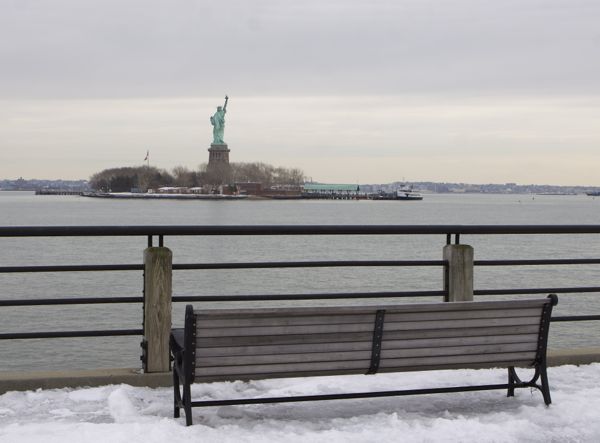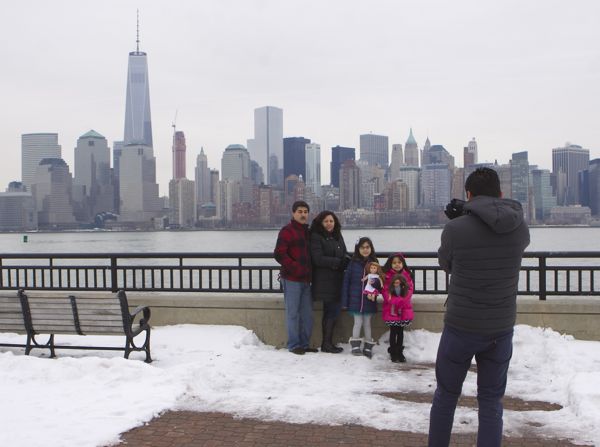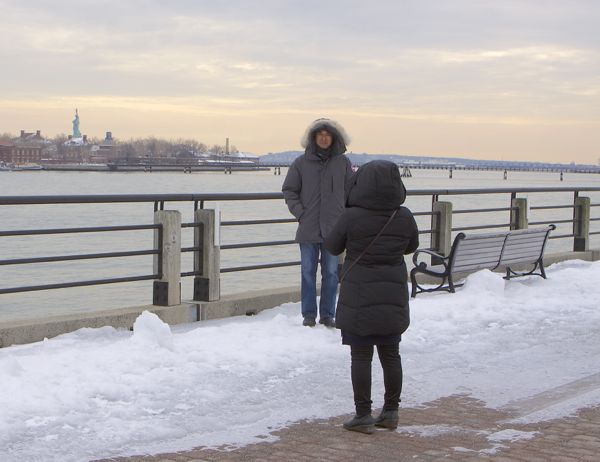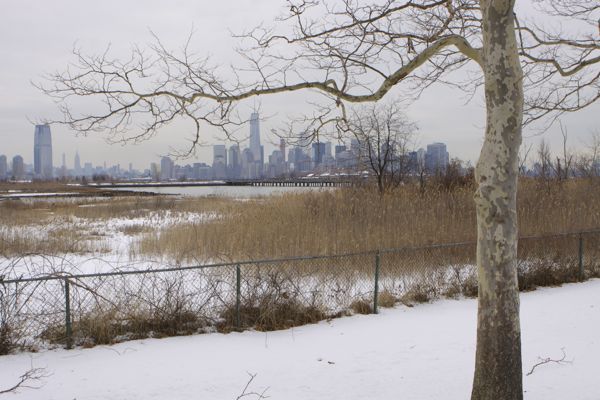Christie Administration Shows Disdain for An Iconic American Place
[Update below]
Responding to critics of Governor Christie signing into law a bill that would promote development of Liberty State Park, DEP spokesman Larry Ragonese set a new low with this one, quoted by NJ TV News:
“We’re looking at every inch of the park,” DEP Spokesman Larry Ragonese says. “What amenities can we add? What services and programs, because it’s the perfect site for events. At the moment, it’s just where people go to get on the ferry. The potential to improve recreational possibilities are enormous. Improve the park and bring in more revenues. That’s the goal.”
That disgusting comment was ignorant and hateful – even by Gov. Christie Administration standards.
Ragonese is a former Star Ledger reporter who covered Morris County.
Given that Morris County background, such ignorance – while seemingly a credential for entrance into the Christie crowd – may reflect the elite bubble he’s been ensconced in for many years.
Regardless of Ragonese’s personal background, could anyone imagine the immediate condemnation if a a Cuomo spokesperson said Central Park was “just a place where people go to catch the subway”?
Ragonese should be fired for that comment. Period.
So, while it was a cold, gray, snowy day, to push back against Ragonese’s sickening vision, I visited Liberty State Park today.
And I can assure you of one thing: no one was there just to “get on the ferry”.
I saw many people having fun and heard many languages spoken – and all in a reverence for the place – take a look:
[update: 2/8/15 – just read this essay – the conclusion seems to capture the essence of what I sensed among visitors to LSP and their self insinuation in the visual landscape:
The praxis of our daily living rests on a solid base of common background convictions, self-evident cultural truths, and reciprocal expectations. If violence thus begins with a distortion in communication, after it has disrupted it is possible to know what has gone wrong and what needs to be repaired.” This is the foundation, if you like, of Habermasian cultural vision and pedagogical hope in despairing times. Martha Nussbaum, writing in The New Religious Intolerance (2012), speaks of the “cultivation of the ‘inner eyes,’ the capacity to see the world from the perspective of minority experience” (p. 59). This cultivating process is at the heart of the pedagogics of mutual tolerance and respect.






Pingback: fitflop online
Pingback: big and tall bears jerseys
Pingback: prescription oakley sunglasses
Pingback: pay4you
Pingback: prada eyeglass frames
Pingback: burberry for men
Pingback: prada purse
Pingback: burberry coat sale
Pingback: michael kors handbags on sale
Pingback: cmwergcnbfnwemxcnfge
Pingback: pengertian penduduk
Pingback: WolfeNotes.com
Pingback: dampak kenakalan remaja
Pingback: Burberry Sale
Pingback: Burberry Outlet
Pingback: contoh pembangunan berkelanjutan
Pingback: mdvfcngcjbwcnrggxfscrfkfvshd
Pingback: wdltjfnmhrsxngfcgmsrnvfasdfvxc
Pingback: limbah domestik
Pingback: pengertian bukan warga negara
Pingback: jodoh dalam islam
Pingback: variabel bebas
Pingback: fasdfasgrthgdfghsfsdfgrg
Pingback: Burberry Handbags
Pingback: ccdntgcsmkcgsdjkfhgfamg
Pingback: crynkgmxcnfsercngfsgdfg
Pingback: contoh karangan
Pingback: burberry trench
Pingback: pengertian pelajar
Pingback: pengertian dokumentasi
Pingback: jodoh dalam islam
Pingback: pengertian budaya menurut para ahli
Pingback: jodoh menurut islam
Pingback: variabel bebas dan terikat
Pingback: variabel bebas dan terikat
Pingback: variabel bebas dan terikat
Pingback: pengertian penduduk
Pingback: Roger Vivier flats
Pingback: contoh judul proposal
Pingback: variabel bebas
Pingback: jodoh dalam islam
Pingback: fitflop soldes
Pingback: contoh karangan
Pingback: pengertian bukan warga negara
Pingback: camiseta atletico de madrid 2014 el corte ingles
Pingback: pengertian budaya
Pingback: ajax shirts verzameling
Pingback: tottenham kit 14 15
Pingback: fitflops online sale
Pingback: nike roshe runs womens